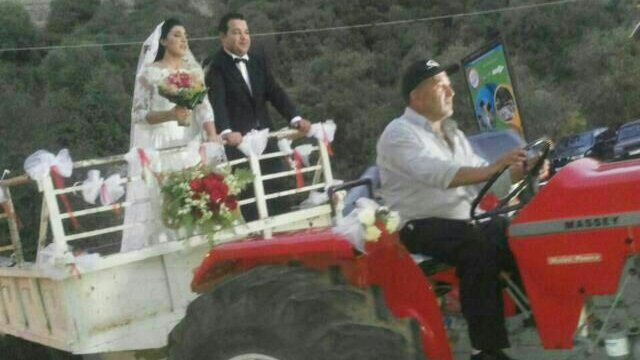Weddings in Syria are all about traditions and how the ceremony is carried out. The protocols that both the groom and bride must follow are well-taught and inherited, so there is no running away from it.
When any man falls in love, he must consider how to arrange a series of meetings and draw connections between his family and the bride’s family before going further with the wedding plans.
First, the groom’s mother, aunts, and cousins visit the prospective bride’s family to get to know each other well. The first impression is the most important one that the bride and her family need to make to proceed with another meeting. The old saying, “You only get one chance to make a first impression” shapes the first session’s atmosphere. At this gathering, the bride comes and presents coffee (and only coffee) to the guests. The women then talk about general affairs (definitely neither weather nor politics) and get a well-rounded picture concerning the bride’s education, age, relatives, and much deeper. The first session must not exceed one hour since there is no actual relationship yet between the two families. From the groom’s family’s side, they pay great attention to the bride’s beauty and family roots, and in some cases they pay attention only to the family name without any deeper consideration of other aspects.
After the first session and hopefully with achieved harmony on both sides, the families go through the second level of tradition where the men of both families meet and decide the dowry that the groom must bring to his bride. In all MIddle Eastern countries, when the groom’s father declares his intentions to the bride’s father by saying, “We ask for your daughter’s hand for our son,” this request confirms that the tradition is followed with no flaws that the public could speak about. It‘s a very sensitive and vital topic in Syrian culture that no one comes to the proposed wedding declaring any objections. This might refer to a problem within the groom’s family and the other family may refuse the marriage completely.
In the Syrian countryside, marriage is deeply linked with what the land provides, and farmers must wait until the summer when they harvest their crops to be able to afford the marriage costs. If sales from the harvest are not profitable enough, they must wait until the next year to get the funds needed for the wedding.
The marriage occurs with separate ceremonies for each family. In cities, both celebrations take place at a large wedding hall; however, in the countryside, the groom’s celebration is held by setting up a big tent usually in the street where all the neighborhood knows that this family is delighted with the marriage. Music fills the air with everyone dancing al-dabka, smoking, laughing, and loud conversation as part of both ceremonies. The engagement party takes three days officially: the first day is for public assembling, the second day is a big hearty lunch offering lamb’s meat and the size of the lamb denotes to how generous the groom’s family is.
The third day is the big one and is called “Al-Henna Day.” The bride wears multiple dresses where her relatives and friends come to paint henna on her hands and arms while wishing her a happy marriage.
When the clock strikes the end of the wedding, the groom comes to visit the bride’s house to take her to her new home. In Syrian small towns, there is no need for a procession of cars; instead, the groom’s family and friends walk hand-in-hand to the bride’s house singing old traditional songs that prompt others to join in the walk until reaching their destination.
Kids enjoy candy, the sunset comes, and the couple’s hearts converge.
Visit my campaign and get to know me.


